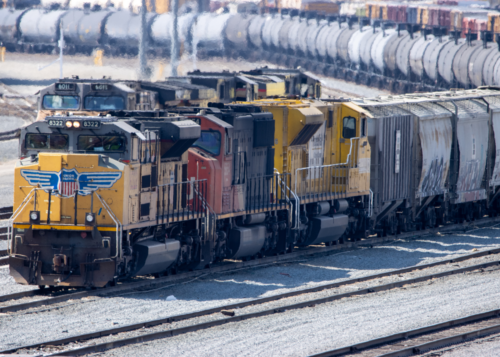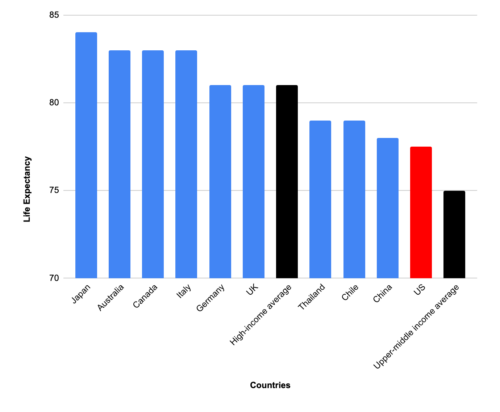Why U.S. Policymakers Should Renew TAA (For Everyone)
By: / / 09.07.2022
What should the Biden administration and Congress do as Trade Adjustment Assistance expires? Consider a new approach: Renew it but drop the trade clause and reach more workers.
John F. Kennedy’s Trade Act of 1962 marked a watershed in U.S. trade policy, leading after a few years of negotiations to the largest single tariff cut in American negotiating history. It was also, though this is less well-remembered, a watershed in worker adjustment policy. The 1962 Act created the Trade Adjustment Assistance (TAA) program, which helps workers losing jobs to import competition by offering benefits that went well beyond the support available for other displaced workers. Kennedy’s argument for it noted that reducing tariffs and opening foreign markets promotes growth, fights inflation, helps new industries grow, and raises consumer living standards; but can also increase competition and stress at home. To address this, he suggested a new federal support program:
“[C]ompanies, farmers and workers who suffer damage from increased foreign import competition [should] be assisted in their efforts to adjust to that competition. When considerations of national policy make it desirable to avoid higher tariffs, those injured by that competition should not be required to bear the full brunt of the impact. Rather, the burden of economic adjustment should be borne in part by the Federal Government. … Just as the government met its obligation to assist industry in adjusting to war production and again to return to peacetime production, so there is an obligation to render assistance to those who suffer as a result of national trade policy.”
Over the six decades since, TAA has represented a liberal-internationalist bargain, blending trade liberalization and support for exporters with a commitment to vulnerable workers. As Kennedy and each of his Democratic successors recognized, openness to foreign trade helps to catalyze the U.S. economy but can also harm less competitive domestic companies and their workers. They also recognized the value of a federal commitment to an active labor market policy that helps displaced workers develop new skills and find career paths, enabling them to support families and continue their contribution to communities and to the nation’s economy. Congress has reauthorized TAA 18 times since. The renewals in 1974, 2002, 2011, and 2015 were particularly ambitious, with the 21st century renewals adding coverage for workers grappling with internet-based competition, workers displaced by plant shifts abroad, and farmers. The most recent iteration, completed in 2015, offered reemployment services including training (on the job training, academic training, and apprenticeship), income support for those enrolled in training, job search services, relocation, and transportation benefits as well as wage subsides for older workers.
TAA thus pledged that as the U.S. reduced trade barriers, those who lost their jobs due to shifts in production and foreign labor would be adequately supported by the government to find new and often better employment. In FY2021, for example, the Department of Labor certified 801 petitions for TAA support, providing help to over 107,000 displaced workers. A statistical snapshot drawn from the Labor Department’s most recent annual report finds that 80,000 of these beneficiaries or 75% of the cohort come from the manufacturing sector. Their median age is 51; half half high school degrees or GEDs, 31% some additional schooling, and 19% are college graduates. By gender, two-thirds are male; by race and ethnicity, two-thirds are white, 13% African-American, 11% Hispanic, and 9% Asian-American.
However, in the past decade since the 2015 reauthorization, the program has changed little. Most recently, Congress left TAA out of the stimulus and recovery packages passed in response to the COVID-19 pandemic and likewise out of the recently passed CHIPS and Science Act. As a result, TAA officially expired at the beginning of July 2022, and workers displaced by trade competition or job shifts abroad no longer can receive its support.
Where to now? TAA often received criticism, sometimes on budget grounds and sometimes on efficacy grounds. Its critics claim that the program failed to reach eligible workers, due to lack of program awareness and hoops to access services. As Andrew Stettner of The Century Foundation observed in a 2021 appearance before the House Ways and Means Committee, “Workers can only qualify for TAA if a union, local government agency, or a group of three or more workers files a petition that proves that job losses at a specific facility/unit are directly tied to trade. This is a laborious process that takes an average of 61 days from the time a petition is filed (which itself may come after a plant is closed), and as a result many potentially qualified workers do not receive coverage.”
These critiques have some force. To Stettner’s point, TAA’s impact is inherently limited by its qualification rules: A worker seeking help must know first that a special program for trade-related job displacement exists, and then be able to show that trade or jobs abroad contributed to their job loss.
Nonetheless, bipartisan policy analysis shows that TAA has had some significant success over time. New York Fed economist Ben Hyman in 2018 after comparing employment outcomes for TAA beneficiaries with outcomes for non-beneficiaries in similar circumstances, found that “ten- years out, TAA-trained workers have $50,000 higher cumulative earnings, driven by both higher incomes and greater labor force participation,” though earnings converge after a decade. An earlier Peterson Institute for International Economics paper highlighted significant change for the better in the 2002 TAA renewal, including increased uptake in services sectors and increased participation in skill development opportunities by affected workers. On the center-right, a recent AEI report found that TAA generally has had long-term impact on earnings for workers receiving services, especially those that received the full benefit of skills training. Additionally, as part of the 2011 reauthorization, the TAACCCT grant program was created. This program encouraged partnerships between community colleges and the workforce system to develop accelerated pathways to careers for adult learners. And a report by New America found individuals that participated in TAACCCT-funded programs were more likely to complete their training, earn a relevant credential, and find in-demand employment.
Not only have multiple sources and research found that TAA has had considerable and valuable impact for trade-displaced workers, but TAA also has a potentially greater importance as a pioneer of generous benefits that other federal programs do not always consistently offer to displaced workers. These include the length of the training benefit (two years) for workers committed to developing new skills, wage subsidies for those in training or based on age eligibility, and the option for workers in particularly distressed areas to get financial support for relocation and job search elsewhere. This type of holistic approach is increasingly important to ensure people persist and complete in their training to prepare for in-demand opportunities. And it is a good model for a better, more active support program for workers generally.
This last point leads to a final, unsettling fact for advocates of the TAA program. TAA has by nature always included a troubling inequity, inherent in Kennedy’s original case for special support for workers displaced by import competition. That is, workers who lose jobs to trade competition can get more generous benefits than workers who lose jobs to recession or domestic competition. Is there really a strong ethical case to distinguish between (say) a displaced clothing factory worker and a displaced waitress or gas station attendant, and view the former as more in need of benefits or more entitled to benefits than the latter?
So, we return to the expiration of the program this year, and potential next steps. By missing the opportunity to renew and update TAA at all, federal policymakers are yet again forgetting about working Americans and the policies that were designed for them specifically. On the other hand, with the Biden administration so far not seeking to open new export markets and declining opportunities to liberalize the U.S. trade regime, does the historic liberal-internationalist bargain — more open markets, support for displaced workers — still apply? And if it is less applicable in current circumstances, should we not therefore think about an opportunity to generalize the program, so that it supports not only trade-affected workers but other workers in industries that have been hard hit over the past two and a half years from the pandemic and technological advancement?
Looking ahead, here is our take: Since TAA is expired, Congress should take this time to think about ways we can do better. Here are three ideas that could address critiques to the program and make sure it better serves workers in our 21st century economy.
- Expand Eligibility: Consider expanding services to reach a broader group of workers — perhaps any worker – facing dislocation, for international or domestic reasons beyond their control. This would still include trade-affected workers but would also open the benefits to those dislocated from industry decline based on automation, climate-related provisions (i.e., coal) and/or fallouts from the pandemic (i.e., retail & hospitality industries).
- Market & Streamline Services: TAA Administrators must better ensure that eligible workers know the program exists and are able to access benefits. This means a more robust public relations campaign, better partnership with other systems (i.e., workforce boards, community colleges) and community-based organizations that are reaching people on the ground as well as collaboration with employers so they can accurately communicate opportunities to at risk employees.
- Prioritize Skill Development: While reemployment services like job search are important, we need to do a better job of helping people prepare themselves for new in-demand jobs, which often means opportunities to up-skill. Skill development opportunities available through TAA are critical to make sure dislocated workers find employment that helps them find new and better jobs.
To make these changes work, policymakers also must think about the budgetary implications. In FY 2021, prior to expiring, TAA served a total of 107,000 workers with an appropriation of $633.6 million dollars. The precise number of workers a generalized program would serve is unclear, but current statistics on TAA use and the universe of potential new beneficiaries can provide some guideposts. On one hand, the 80,000 manufacturing workers in the FY2021 cohort is about 6% of total manufacturing-sector layoffs, and total layoffs in a year typically average about 1 million. On the other, the most likely users are long-term unemployed workers unable to find new jobs quickly, and the total long-term unemployed population has varied in recent years between the current 1.2 million and 3 million. Such figures suggest that a million displaced workers might be something of an upper bound. To serve this many dislocated workers across an array of disrupted industries and the long-term unemployed, TAA’s budget would have to increase about ten-fold, reaching roughly $6 billion annually. However, that number shouldn’t alarm policymakers and probably can be reduced. Determining whether a particular worker’s layoff is ‘trade-related’ requires a significant investment in administrative overhead and costs. A more generalized program would reduce the time and money spent on proving eligibility. Additionally, with an expanded TAA, other federal workforce programs may be duplicative and unnecessary. This means programs could be consolidated or cut, which could also help reduce costs.
In sum, the TAA program is an important one, delivering valuable benefits to hundreds of thousands of workers each year. Congress should remember this impact and make sure it does not simply disappear. It should also remember, though, that trade is far from the largest cause of job displacement, and all workers — especially those in lower-skilled jobs that are subject to increased disruptions as the economy changes — deserve support. With the program lapsed, federal policymakers should consider ways to improve and broaden it. An updated policy could focus beyond trade and international competition, and provide adjustment assistance for all economic disruption, would help empower working Americans to advance by giving them access to the skills and financial support necessary to find new and emerging in-demand work. This is critical to enhance workers’ confidence, broaden economic opportunity, and help our nation grow from the bottom up and middle out.






